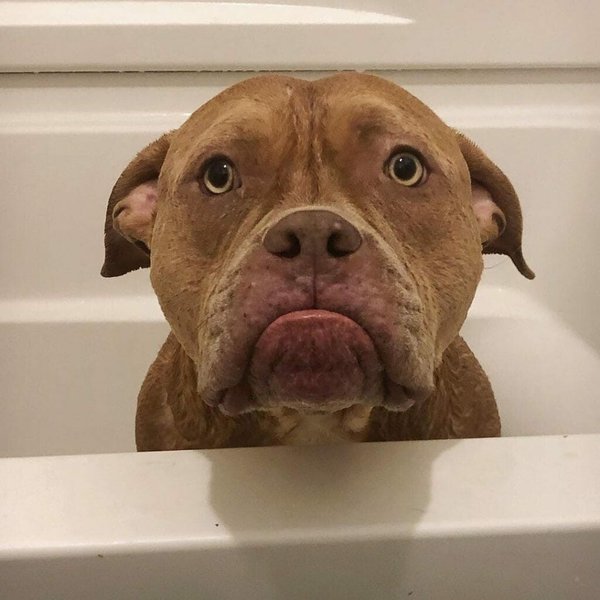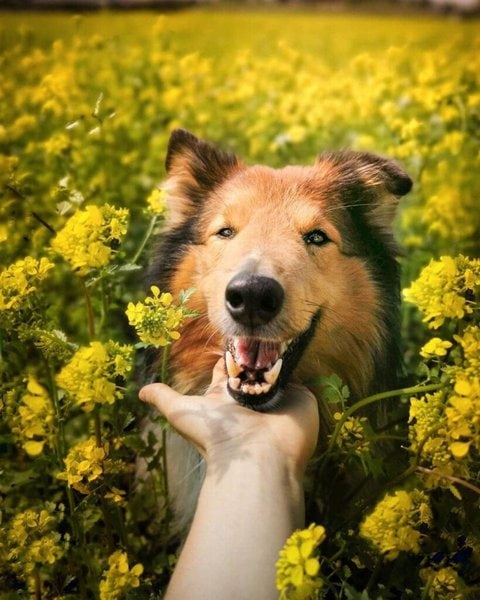Dogs communicate in different ways, and one of a pooch’s ways of telling its owner that something is wrong and expressing its desires is by crying.
So then, why do dogs cry? Crying in dogs can be a sign of excitement, boredom, a way of seeking attention, or stress and anxiety. In the same vein, a dog in distress can cry out in pain due to an existing medical condition, although it has to be said that this isn’t common.
Determining the reason behind the cries of your pooch is the very first step to take when it comes to helping such a pooch. But with the various possible reasons for crying in dogs, finding out the cause of your furry friend’s tears can prove to be a herculean task. Luckily for you, we’ve put together this article that contains warning signs to look out for, when your pooch is crying, as well as how to help a crying dog. However, before we go into all this, let’s have a look at what typically causes dogs to cry.
What Are Dogs Trying To Say When They Cry?

Dogs commonly cry as a form of attention-seeking behavior, to show excitement, due to boredom, anxiety, or fear. Similarly, a dog may also cry out in pain from an existing medical condition.
Attention-Seeking Behavior
There is a tendency for attention-starved dogs to cry and whine, and this is all in a bid to draw their owners’ attention. That said, most dogs are further encouraged to cry and whine as a means of seeking attention when this behavior has elicited a sort of response from their owner in the past.
Excitement
As weird as it may sound, crying or whining in dogs can also be a sign of excitement. It isn’t uncommon for dogs to whine excitedly when their favorite human returns home after a long day at work.
Boredom
Mental stimulation is equally as important as physical activities for dogs. And a pooch can also cry simply because it is feeling bored and needs to let out pent-up energy.
Anxiety And Fear
There are several instances, such as thunderstorms and the presence of strange people, that can induce fear in dogs. And crying is one of the ways for dogs to show that a certain situation is making them anxious.
That said, in addition to crying, your pooch can also exhibit its fear and anxiety by barking, growling, panting, baring its teeth, and tucking its tail between its legs.
Crying Can Also Be A Sign Of An Underlying Medical Condition
Dogs are typically stoic and refuse to show signs of pain, even when hurt. But when a pooch’s cries are accompanied by additional symptoms such as fever, vomiting, lethargy, and loss of appetite, then such a dog is most likely suffering from a medical condition.
Crying out due to pain is less common in dogs, which is why you have to be alert to other warning signs as they are outlined in the next section of this article.
What Are The Warning Signs To Look Out For When Your Dog Is Crying?

Warning signs to look out for when your dog is crying include lethargy, objection to physical touch, loss of appetite, and breathing difficulties, just to mention a few.
As stated earlier, crying can be an indicator that your pooch is in pain from an existing medical condition, and this is why it is super important to swing into action immediately when you notice your pooch whining.
Oversensitivity To Touch Or Normal Handling
In addition to crying, if you observe that your pooch flinches when touched or backs away when you try to hold it, there is every possibility that such a dog is silently nursing an injury.
And in this case, a full medical examination, and sometimes, X-rays may be needed to determine the extent of the pooch’s injury.
Lethargy
If, in addition to whining and refusing touch, you notice a reduction in your pooch’s normal activities and tired displays, then a visit to the vet is certainly in order.
Aggressive Behavior
Crying/whining, accompanied by aggressive behavior can also be an indicator that a pooch is in pain from an underlying medical condition, and it can also mean that such a pooch is going through significant stress.
Breathing Difficulties
Dogs that are having a hard time breathing may whine and cry out; Hence, when you hear your dog crying, you should check to be sure that such a pooch is breathing fine.
In addition to those listed above, other warning signs you should be on the lookout for when your dog begins crying, include:
What To Do When Your Dog Is Crying For Help?
Some of the things you can do to relieve your dog when it is crying for help include booking an appointment with your vet to rule out medical conditions, keeping your pooch engaged by providing toys, and reassuring the dog in stressful situations.
Book A Medical Appointment With Your Vet
Because crying can be an indicator of several different medical conditions, the best thing to do, once you notice your furry friend crying, is to get on the phone with your vet right away!
Upon arrival at the clinic, your vet will typically carry out a series of physical tests to be sure that your pooch’s crying isn’t due to an underlying medical condition. And if it is discovered that your dog is crying due to pain from an existing medical condition, the appropriate treatment and medication will be administered.
However, if your vet rules out a medical condition as the cause of your pooch crying, you can go on to apply any of the following methods to stop your dog’s crying:
Try Calming The Dog
In stressful situations such as during a thunderstorm or when you’re with your dog in the midst of strangers, speaking softly to and reassuring your dog will go a long way in creating a sense of security and stopping the pooch’s cries.
This method of calming the dog will work to stop crying in most cases. But if your dog tends to remain agitated, even after you try petting and speaking softly to him, you should consider speaking to your vet about anxiety medication.
Additionally, you should learn to read your pooch’s body language in certain situations, and when you notice signs of stress in the dog, you should immediately swing into action and try to calm down the pooch in question.
And if possible, you should also try to remove the pooch from the stress-inducing situation or environment, or simply remove any triggers of stress in play.
Pay More Attention To Your Dog
Dogs, just like humans, have emotional needs, and if you haven’t been paying attention to your furry friend, it is only appropriate that you begin spending more time with your dear Fido.
Also, as much as it is tempting to pet your dog when it is crying for attention, while you’re busy, it is probably best that you ignore the dog till you’re done with whatever task you’re carrying out. However, once the dog gets tired of whining, you should make sure to shower it with a lot of love and attention.

Engage Your Dog In Physical Activities
Dogs get bored easily, and when they aren’t getting enough action, they tend to cry and whine in frustration and due to the pent-up energy coursing through their veins.
To prevent this from happening, take out time to engage your furry friend in a variety of physical and mental activities. And if you’re the busy type, ensure to provide your dear Fido with interactive toys and puzzles that will hold the pooch’s attention for a significant period.
Training
In most cases, it is possible to curb your pooch’s tendencies to cry and whine by engaging the pooch in basic obedience training exercises. However, if you’re finding it difficult to correct this behavior in your dog, the next course of action should be to employ the services of an animal behaviorist.





